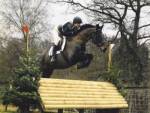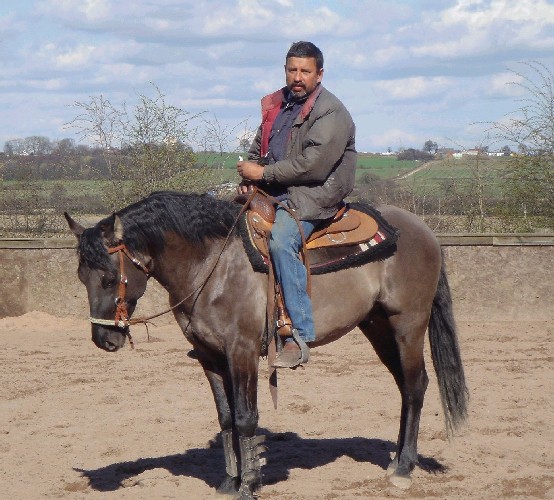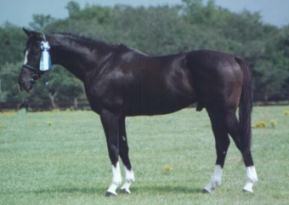genetic health and fitness in horses
The Ins and Outs of Horse Breeding
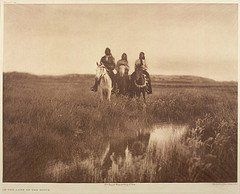 Genetic health and fitness in horses is heavily influenced by the way people breed horses and by the way in which breeds of horses have been developed. Genetic health and fitness in horses is heavily influenced by the way people breed horses and by the way in which breeds of horses have been developed. Breeds are often founded by few horses and are thereafter inbred to some extent. The horses within breeds are therefore more genetically related to one another than they otherwise might be. This can have positive consequences, with more horses being of particular superior types. Unfortunately it can also have less pleasant consequences too, leading to an increase in genetic disorders. Nowadays genetic testing can help breeders reduce the risks to their horses and themselves, and lower the incidence of genetic disorders. The new technology allows the horse breeder to get on with the task of producing the beautiful and talented foals that we all enjoy so much, while alleviating the risks involved. This article covers some aspects of how genetics influences horse health and fitness. For more information about other aspects of horse health please visit
holistic hoof and horse care.
Our domesticated horses are, hopefully, provided with all the essentials of life. They don't need to compete for food, and we help protect them from the extremes of the environment. There is always water to drink. There are stables and rugs when it's cold, shade when it's hot. We clean them and protect them from parasites. We vaccinate them against disease. Natural selection is tempered by human intervention. No longer is it essential for the horse to escape from predators to survive, when our fences and stables protect them. By and large horses aren't left malnourished, risking death each winter. Horses that become ill or injured are referred to the vet, not left to fend for them themselves. This selection pressures on our domestic horses tend to be the ones exerted by the breeders: artificial rather than by natural selection. Mates are carefully chosen, in an attempt to optimise the quality of foals they produce, in whatever way the breeders choose to define quality. Those qualities are not necessarily related to survival in the wild, but fit the horse for a purpose, whether that's in the show-ring, on the racecourse or as the family trail horse.
Sometimes horse breeders mate unlike horses together – in genetics language they are said to be out-breeding. They may, for example, cross a native breed mare with an Arab or Thoroughbred stallion, to give the foal more refinement, athleticism and spirit than the mare. Or they might cross a hot tempered mare with a cool stallion in the hope of a calmer foal, or to a tall stallion if they want a taller foal. Cross-bred horses often make wonderfully useful family or competition horses. Some crosses even have particular fans, to the extent that they have gained a name of their own, like the so called “Quarab” or Quarter Horse cross Arab.
Horse breeders have often used a form of inbreeding called line-breeding: horses are bred to have a particular exceptional animal more than once in their pedigree. Linebred horses are more genetically related to that distinguished horse than they would be if it appeared only once in their pedigree. Sometimes people try to distinguish linebreeding from inbreeding, by not allowing the duplicated individual to be less than five generations back in the pedigree. This of course isn't a bad idea, since the negative effects of inbreeding are then less likely, but technically speaking linebreeding is still a form of inbreeding, with all the attendant potential benefits and disadvantages. One of my own American Quarter Horse mare Kitty has Hollywood Gold twice her five generation pedigree, once on her dams side and once on her sires side. She is cremello (cream with blue eyes) and has apparently inherited both of her cream gene copies through this horse. A more extended pedigree reveals that various other notable horses also occur several times in her pedigree. It is possible to work out that Kitty has inherited about 5% of King's genes, even though he first occurs six generations back in her pedigree. That's probably about a thousand genes or so that they have in common. The intention of linebreeding is to make other horses with some features as similar as possible to the exceptional ones. This is the good aspect of linebreeding, which has indeed produced many beautiful, athletic and exceptionally talented horses.
Each of us, and each of our horses, probably carries a single copy of some rare allele for something not too nice: a genetic deformity, a genetic disorder, or a predisposition to a disease or mental disorder. An allele is just a particular variant or “version” of a gene. We have two alleles for each gene, one from our mum and one from our dad. The same is true of horses. As long as the affect of the particular “nasty” allele is over-ridden by the other “good” allele we don't need to worry about having the odd nasty lurking about. And because those nasties are rare the chance of two parents happening to pass on two copies of the same one to their children are thankfully rare also. All this is true until there is inbreeding. When there are some horses (especially stallions) who are really influential in a breed their alleles get proportionately more common, both the good ones and sometimes also the bad ones. The “nasties” hide away from being selected against when they occur as a single copy, but now there are increasing numbers of individual horses with a single copy. At this point the chances of two parents having the same nasty, inherited somewhere along the line from the same (usually, but not always) stallion, are increased. Then the chances of a foal with two copies of it are also increased, and such foals will be affected by the genetic disorder. That's when genetic disorders can suddenly seem to appear from out of no-where, and become relatively common within a breed. The adverse consequences of inbreeding are called inbreeding depression. Their impact can be illustrated by the case of severe combined immune deficiency disorder (equine SCID), most commonly found in Arabian horses. Equine SCID results in a deficiency of essential parts of the bodies immune system. Foals born with the condition may be well initially, when the mothers colostrum contains antibodies that protect them from infectious agents. However they are likely to die within 3 months of birth, when any normally minor infections have the potential to be fatal.
Other genetic disorders, which can now also be tested for, include lethal white overo syndrome (in certain types of paint horses), hereditary equine regional dermal asthenia (HERDA, a serious skin disorder of American Quarter Horses), cerebellar abiotrophy (mostly in Arabian horses), junctional epidermolysis bullosa (a foot problem, mostly of Belgian draft horses) and glycogen branching enzyme deficiency (which causes abortion and early foal death, mostly in American Quarter Horses). If you are a breeder, especially one specialising in a particular breed or line of a breed, it's a great idea to find out about any genetic disorders that might be associated with your particular breed. Many of these can now be tested for, giving you and your customers the peace of mind that you will breed healthy foals, both actually and genetically healthy. Most tests are both simple to carry out and inexpensive, not requiring a vet. A very few do require a blood sample, but most only need you to send off some hairs pulled from the mane or tail (not cut since the genetic material is the hair root). Horse breeding is a specialist skill that brings happiness and satisfaction to many people, both the breeders, and the owners who benefit. The science of genetics can take away a little of the unpleasant side and uncertainty, leaving breeders to get on with the challenging but happy task of producing beautiful, useful and well balanced foals. |
|






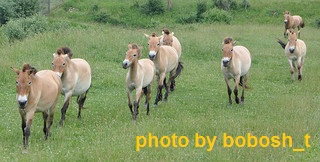 In the wild, stallions with the strength and experience to have acquired a herd are the ones that mate with the mares. The looks, colors and temperaments of mates are irrelevant. The only competition is for essential resources: a whole lot different to competition at the horse show or event. The horses which bear offspring – both the mares and the stallions - are the ones that have survived the vagaries of the environment, such as extremes of weather, food shortages, predators and disease.
In the wild, stallions with the strength and experience to have acquired a herd are the ones that mate with the mares. The looks, colors and temperaments of mates are irrelevant. The only competition is for essential resources: a whole lot different to competition at the horse show or event. The horses which bear offspring – both the mares and the stallions - are the ones that have survived the vagaries of the environment, such as extremes of weather, food shortages, predators and disease. 